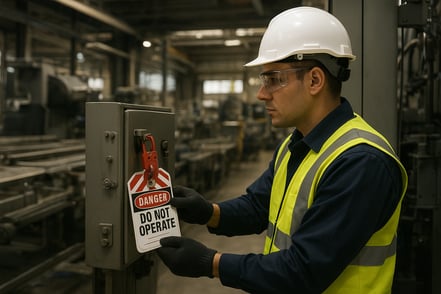Industrial control systems are the backbone of modern facilities, keeping processes running smoothly. But a single misstep by a SCADA (Supervisory Control and Data Acquisition) operator—whether during a shutdown, a switch-over, or a rare abnormal event—can cascade into catastrophic downtime and lost revenue. Static manuals, online guides, or shadowing don’t prepare operators for the unpredictable. What they need is immersive, scenario-rich training and interactive VR simulation delivers exactly that.
The Hidden Cost of Control Room Errors
Control rooms manage critical processes where timing, precision, and decisions under pressure are paramount. Traditional methods like page-based SOPs and ad-hoc shadowing fall short in building true operational competence. Operator Training Simulators (OTS) offer a bridge: they replicate the DCS (Distributed Control System) and let teams rehearse core procedures like start-ups, shut-downs, and emergencies without risking production or safety. (Wikipedia)
VR Simulation = Next-Level OTS
High-Fidelity, Risk-Free Realism
Solutions like AVEVA Operator Training Simulators pair VR with real process dynamics, synced DCS emulations and instructor-controlled scenarios, to bridge the gap between theory and practice. (AVEVA)
Similarly, AVEVA XR for Training creates immersive environments where operators can walk through virtual plants, practice safety procedures, and train for emergency cases before ever entering the real control room. (AVEVA)
Digital Twins and VR — A Dynamic Combo
Emerson’s Mimic Field 3D VR software uses existing CAD models to create a digital twin of a plant, enabling field personnel to practice in a complete virtual replication of the facility. It allows trainees to navigate complex start-ups, shutdowns, turnarounds, and outages—all without touching real hardware. (Automation World)
Proven Safety & Learning Outcomes
Immersive learning environments dramatically improve retention and response under stress. Studies show VR training achieves stronger retention, higher engagement, and better transfer of learned skills than traditional classroom instruction. (ATS Industrial Automation, SkyRealar, Xiv)
Simulate Rare but Critical Abnormal Conditions
OTSes and VR allow you to inject failures—network faults, equipment malfunctions, supply fluctuations and give operators repeated practice under controlled conditions. This capacity to recreate high-pressure, seldom-seen events is critical for resilience—and impossible to replicate consistently in live systems. (Wikipedia)
Real-World ROI
- Half the Training Time: Sites like Shell’s Scotford Complex saw a 50% reduction in training time using OTS systems. (AVEVA)
- Faster Learning, Deeper Recall: Meta-analyses show VR beats traditional training on speed, retention, and learner confidence. For example, SkyReal data shows VR learners remember ~90% of tasks vs. only ~20% from lectures. (SkyRealcapsim.com)
Why VR-Compatible OTS Beats Manuals and Safe Shadowing
|
Traditional Manual / Shadowing |
VR-Enhanced OTS |
|
Static, passive learning |
Interactive, immersive, hands-on |
|
No abnormal event exposure |
Simulate rare events safely |
|
No performance feedback |
Real-time scoring and coaching |
|
Risk to actual operations |
Completely safe virtual environment |
The Path Forward: Smarter Operator Training
Here’s how VR-powered training transforms SCADA operator performance:
- Immersion Builds Confidence
Trainees learn through doing—not just reading—under pressure, with risks eliminated. - Precise Feedback Loops
Metrics, scores, and adaptive scenarios enable operators to improve in measurable ways. - Scalable, Reusable Training
Virtual control rooms can be rolled out across sites, remote teams, or multi-shift operations without replicating physical infrastructure. - Customizable to Your Environment
Use your own CAD models, control logic, safety cases, and SOPs to create training that mirrors your facility precisely. (Program-Ace, AVEVA)
Bottom Line
Control room errors don’t just cause downtime—they can cost millions. Yet traditional methods fail to prepare your SCADA team for what matters most: abnormal conditions, decision-making under stress, and operational consistency. VR-enabled training and OTS offer an immersive, measurable, and repeatable path to operator excellence—without ever touching live systems.




Comments